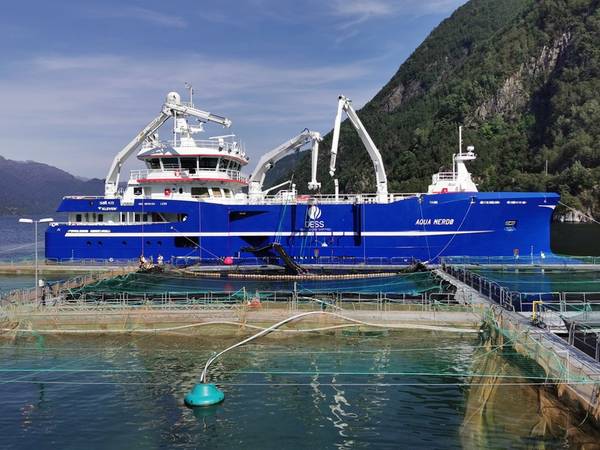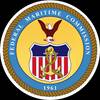
When Norwegian fish farming support vessel operator DESS Aqua wanted to improve connectivity on its vessels early last year, it had some demanding criteria. Now, just over a year later, it has installed a wireless system from ScanReach across most of its fleet and is likely to continue installations into the remaining vessels and three newbuildings.
Bjørn‑Inge Engene, COO, was looking for more than just technical connectivity: he wanted business connectivity across the company. “We have invested a lot of money into having one system to run our entire company,” he said. Everything can be managed from a mobile phone, “so why should I spend money in having yet another system?,” he said.
That management system can integrate with third party software, such as the company’s accounting system. Invoices display on his phone for approval and, thanks to its face recognition ability, he can approve them at a glance. As long as a potential new system has an open application programming interface (API), “we can do whatever we want with it,” Engene said.
That is how ScanReach’s system operates and the company’s chief business development officer Jacob Grieg Eide believes that open APIs are now essential for successful business relationships. It is not realistic to expect a supplier or partner to adapt to a particular customer’s way of working because that would hinder innovation, while open systems make it simple to aggregate, transmit and visualise data “and that's how we build trust,” he said.
ScanReach was not the only supplier that DESS was considering but the others all had limitations such as the extent of their wireless coverage on board. So when ScanReach came knocking – literally – it took DESS just a week to sign up for its pilot program.
It initially installed the system on one vessel, which involved fitting a number of wireless nodes throughout the hull. Engene subsequently spent some time on that vessel and crawled “absolutely all over the boat” with a wearable sensor. “I clicked the panic button and it connected to the system every time,” he said. It convinced him that ScanReach’s wireless technology was reliable even in the depths of a steel hull so, although the pilot was intended to last six months, DESS signed a fleet-wide agreement after just three.
 DESS Aqua’s fish-farming customers demand high safety standards (Image courtesy DESS Aqua)
DESS Aqua’s fish-farming customers demand high safety standards (Image courtesy DESS Aqua)
Personnel Tracking
Its main use of the system so far has been to run ScanReach’s ConnectPOB personnel tracking system, which makes use of the nodes and the mesh they create specifically to keep track of personnel onboard (POB).
When they are called to their muster stations, for example, ConnectPOB automatically records each person as they arrive and displays this information on the bridge. In the event that someone does not muster, ConnectPOB will show which node their sensor is currently – or was last – linked to, reducing the time needed to find them.
Eide believes that ConnectPOB is good for business, which Engene confirmed. His customers are fish farmers for whom DESS Aqua provides services such as harvesting and transporting salmon from fish farms. “They want to see a good safety culture,” he said, so “using this technology promotes interest and shows why we are different.” This distinction is important in a growth sector such as fish farming, which has doubled in volume since 2005 and is still growing.
Its vessels typically have eight-to-10 crew on board, many of them working along the vessel’s side during fish handling operations and sometimes stepping off the vessel to stand on the fish cages. This makes it likely that, over time, someone will fall overboard, Engene said, prompting DESS Aqua to support a ScanReach project to develop a man-overboard (MoB) sensor.
This is not straightforward: it should not alarm every time a crew member intentionally steps onto a fish cage and the system should not rely on, for example, an accelerometer detecting a water impact as its sole MoB indicator because a fall may not be from sufficient height to produce a significant deceleration from ships with low freeboards.
ScanReach’s sensors do have accelerometers, Eide said, and the company is working with its suppliers to develop the next generation of wearable devices which may check for salinity or another parameter to detect an MoB situation. “There is a lot of functionality in the wearable and in the node that is not yet deployed” so they could be enhanced, which can be done remotely via satellite, he said.
A further project that DESS Aqua is supporting is developing gas measurement sensors that would link with ScanReach nodes to report the environment inside a confined space before it is entered. ScanReach is conducting a global technology survey to find suitable environmental sensors for this purpose, which will probably be calibrated remotely, and it is discussing with DESS Aqua and other clients what gasses should be monitored and other operational details.
Eide stressed a key benefit of linking sensors to the ScanReach wireless system, especially in a situation where drilling holes for cables is impracticable, such as into fish tanks: “that would be the end of the business case.” Wireless monitoring is also cheaper: “I know how much we paid to instal the fixed probes we have today and I'm not installing any more,” said Engene.
Being able to combine POB information with environmental data “will be gold in our industry,” he predicted, because of the frequency that crew have to enter the fish tanks. Doing it correctly with all the necessary pre-entry checks takes time, so it can be tempting to cut corners. Automating those checks would remove that risk, he believes, and he is hopeful that the Norwegian flag authorities might be willing to view such a system to be acceptable instead of the current arrangement that uses set procedures that may be viewed as time-consuming. “We have to make it easy for our crew to do the right things,” he said.
He is also keen to take advantage of ScanReach’s next project, ConnectFleet, which will provide fleet-wide surveillance that will “dramatically increase safety,” said Eide. It will deliver real-time information from across a fleet of ships to the shoreside office from where support can be offered in an emergency.
“When the alarm goes off, the captain is alone on the bridge, because everybody else is occupied, so to have that link between the office and the bridge during emergencies will be incredibly important,” Engene said. “The first hour in any emergency is the golden hour,” especially “on our ships with limited numbers of people on board,” he added.
It will not be only for emergencies, however. As more sensors are developed – for example, to relay vibration data, fuel consumption and other information – ConnectFleet “can just add so much value,” Eide said.



